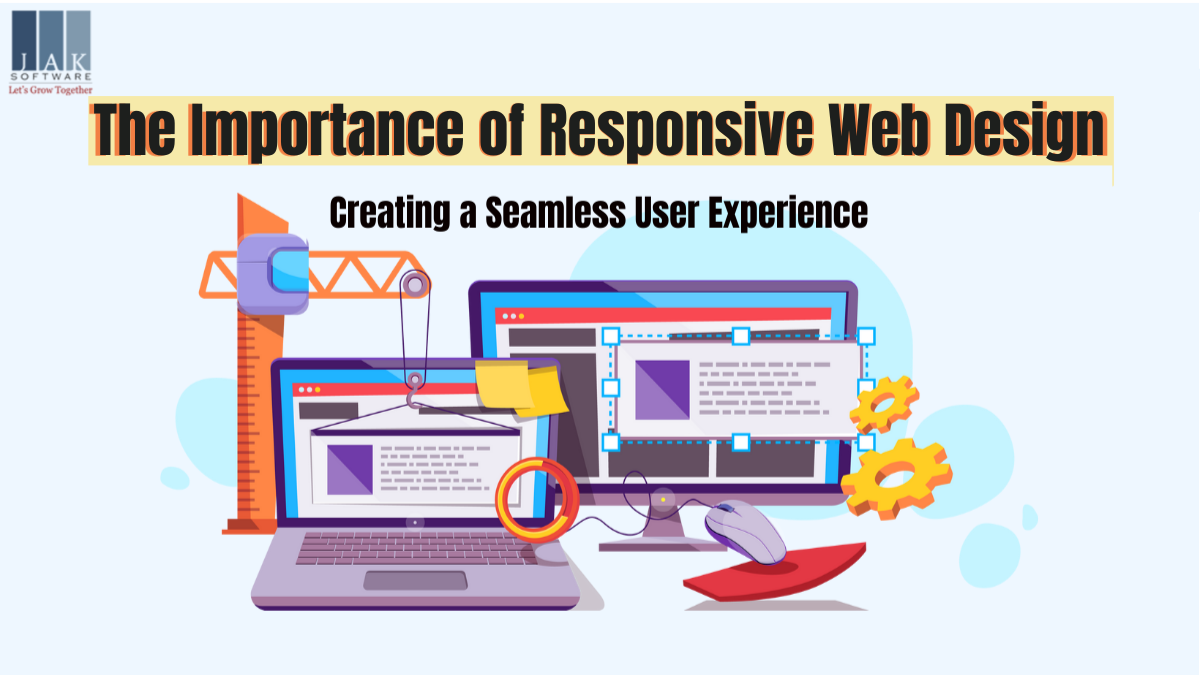Why Responsive Website Design Important
Responsive web design has become a cornerstone of modern web development and ORM (Online Reputation Management) in digital marketing. In today’s digital age, where users access the internet through an ever-growing variety of devices—including smartphones, tablets, laptops, desktops, and even smart TVs—it is essential to ensure that websites provide a seamless experience for all users. By using flexible grids, scalable elements, and adaptable layouts, responsive design ensures that websites automatically adjust to fit any screen size or resolution, contributing to a positive user experience and enhancing your brand’s reputation through effective ORM in digital marketing.
Improved User Experience
A responsive web design ensures that users can easily navigate and interact with your website, regardless of the device they are using. This ensures that your website adapts its layout, fonts, images, and functionality to suit the screen size and resolution of any device. Eliminating the need for constant zooming or excessive scrolling results in a more seamless and enjoyable experience for users. This can lead to increased time spent on your site, greater user satisfaction, and a higher likelihood of repeat visits.
A great user experience also means better engagement with your content. Whether it’s reading blog posts, exploring product pages, or watching videos, users are more likely to stay engaged when the content is easy to access and view. Additionally, happy users often share their positive experiences, leading to increased word-of-mouth promotion.
Better Search Engine Optimization (SEO)
Search engines, especially Google, give higher priority to websites that are mobile-friendly in their search rankings. Google’s mobile-first indexing prioritizes the mobile version of a website when determining its search rankings. A responsive website improves your chances of ranking higher in search engine results by providing a consistent experience for mobile and desktop users alike. Moreover, having one URL for all devices streamlines the crawling and indexing process for search engines.
SEO isn’t just about rankings; it’s also about visibility. A responsive design ensures your website is more visible to potential customers searching for relevant keywords. Combining responsive design with other SEO strategies, such as optimized content and fast loading speeds, can greatly enhance your online presence.
Increased Mobile Traffic
With mobile devices accounting for a significant portion of global internet traffic, having a responsive website is no longer optional. Research indicates that more than 50% of web traffic is generated from smartphones and tablets. A responsive design ensures that mobile-friendly website users can access your content quickly and efficiently, making it easier to capture this growing audience segment.
Mobile users often browse websites while on the go, so a design that caters to their needs can significantly impact your website’s traffic and engagement metrics. A responsive site ensures that users can quickly find the information they need, whether they’re checking store hours, reading reviews, or making a purchase.
Faster Page Loading Times
Speed is a critical factor for retaining users and boosting SEO rankings. Responsive web design ensures that your website’s elements, such as images and scripts, are optimized for different devices. This results in faster loading times, especially on mobile devices where internet connections may be slower. Faster loading times reduce bounce rates, keeping users engaged and improving overall site performance.
Visitors expect websites to load quickly, and even a one-second delay can significantly impact user satisfaction. By implementing responsive design, you’re not only meeting user expectations but also ensuring that your website performs well in terms of technical metrics like Core Web Vitals.
Cost-Effective Maintenance
Managing separate websites for desktop and mobile users can be both expensive and time-consuming. With a responsive design, you only need to manage one website that works seamlessly across all devices. This reduces development, maintenance, and content update costs, freeing up resources for other areas of your business. A unified website also ensures consistency in branding and messaging across platforms.
For businesses with limited budgets, responsive design is an efficient way to maximize ROI. By focusing on a single, adaptable website, you can allocate resources more effectively while ensuring that all users have a positive experience.
Higher Conversion Rates
When users can easily navigate your website and complete desired actions, such as making a purchase or filling out a form, they are more likely to convert. Responsive design reduces friction in the user journey by ensuring that call-to-action buttons, forms, and navigation menus are accessible and easy to use on all devices. A consistent and optimized experience across platforms builds trust and encourages users to take action.
Higher conversion rates directly impact your bottom line. Whether you’re running an e-commerce store or generating leads through a service-based site, responsive design can make the difference between a visitor leaving and a visitor converting.
Adaptability to Future Devices
Technology is ever-changing, with new devices featuring different screen sizes being released frequently. Responsive web design uses flexible grids, fluid layouts, and scalable elements to adapt to any screen size. This future-proof approach ensures that your website remains functional and visually appealing on devices that have yet to be invented, saving you from frequent redesigns.
As innovations like foldable screens, wearable devices, and smart displays become more common, responsive design ensures your website stays relevant. It also allows you to focus on creating great content instead of constantly reworking your site’s layout.
Improved Brand Perception
A professional, modern, and user-friendly website management service reflects positively on your brand. Visitors are more likely to trust a business that provides a seamless digital experience. Responsive web design demonstrates that your company values user convenience and stays updated with current trends. This can strengthen your brand’s reputation and encourage customer loyalty.
Your website is frequently the initial point of contact customers have with your brand. By prioritizing responsive design, you show that you care about delivering value to all users, regardless of how they access your site. Focusing on quality can distinguish you from your competitors.
Social Media Integration
Social media is a significant driver of web traffic, and many users access websites through links shared on platforms like Facebook, Twitter, and Instagram. Since most social media engagement happens on mobile devices, your website must be optimized for smaller screens. Responsive design ensures that users coming from social media have a positive experience, increasing the likelihood of engagement and conversions.
Additionally, responsive sites are better suited for integrating social sharing buttons and features, making it easier for users to share your content. This can lead to increased visibility and traffic from social media platforms.
Compliance with Modern Standards
Web design standards and best practices are continuously evolving. The responsive design aligns with these modern standards by providing compatibility with the latest browsers, devices, and user expectations. Additionally, accessibility standards often overlap with responsive design principles, ensuring that your website is inclusive for users with disabilities. Compliance with these standards not only improves user experience but also protects your business from potential legal issues.
By adhering to modern standards, your website is more likely to remain functional and secure over time. This also gives your business a competitive edge in an increasingly crowded digital landscape.
Conclusion
Responsive web design is not just a trend; it is a necessity in digital marketing companies. By prioritizing adaptability, usability, and efficiency, businesses can create websites that cater to the needs of all users, regardless of the device they use. From boosting SEO rankings to improving user experience and increasing conversion rates, the benefits of responsive web design are undeniable. Investing in a responsive website today paves the way for your brand’s long-term success.
Beyond its technical benefits, responsive design is a statement about your brand’s commitment to excellence. It shows that you are prepared to meet the demands of an increasingly mobile-first world while delivering value to every visitor. With responsive design, you can future-proof your website, expand your reach, and build a stronger connection with your audience.




